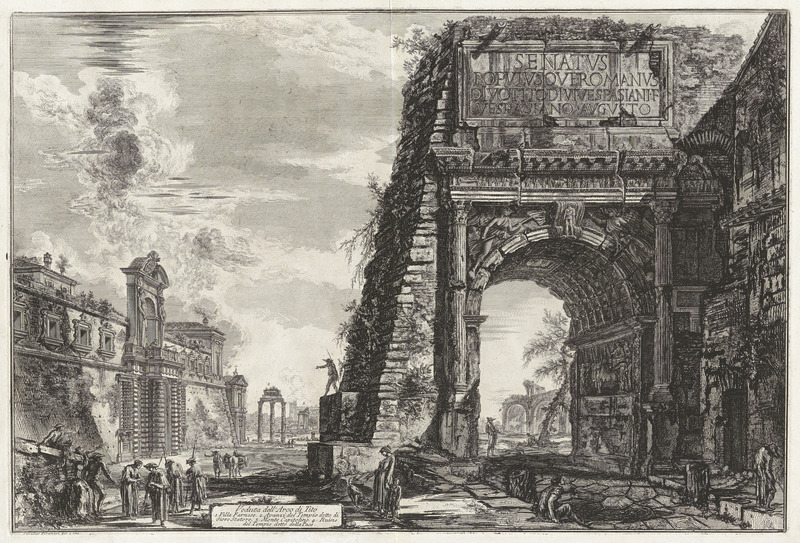Piranesi, Arch of Titus

G.B. Piranesi, Piano dell'Arco di Tito, plate 91 from the series "Vedute di Roma" (Views of Rome), 1771, Davis Museum at Wellesley College (1999.0.406)
The Arch of Titus, constructed in AD 81-82 after Titus’ death, is a monument dedicated to Titus (ruled from AD 79 to AD 81) and his father Vespasian (ruled from AD 69 to AD 79) by the Roman Senate, honoring their success in suppressing rebellions in Judaea in AD 70. The Arch is located on the Via Sacra near the Colosseum, claiming a key point in the triumphal procession. The reliefs on the Arch depict the triumphal procession of Titus and Vespasian in AD 71, personifications of Victory and Rome, and Titus’ apotheosis.
In this print, Piranesi portrays the Arch on a monumental scale with heavily inked lines, capturing both its grandeur and its details. The print shows the eastern side of the Arch (looking towards the Capitoline Hill), with a fortress attached to its right side and a buttress to its left. Piranesi manipulates the perspective so the basilica can be seen through the archway. The overgrown foliage and signs of destruction mark the frail condition of the Arch, casting contrast to the new and modern Farnese garden (built in 1550) on its left. In the background, the ruins of the Roman Forum are faintly etched and reduced to a minimal scale compared to the Arch.
A photograph by Robert MacPherson shows the relief panel of Romans carrying spoils from the Temple of Jerusalem during the triumphal procession. This panel is located on the left side of the Arch’s passageway in Piranesi’s print.